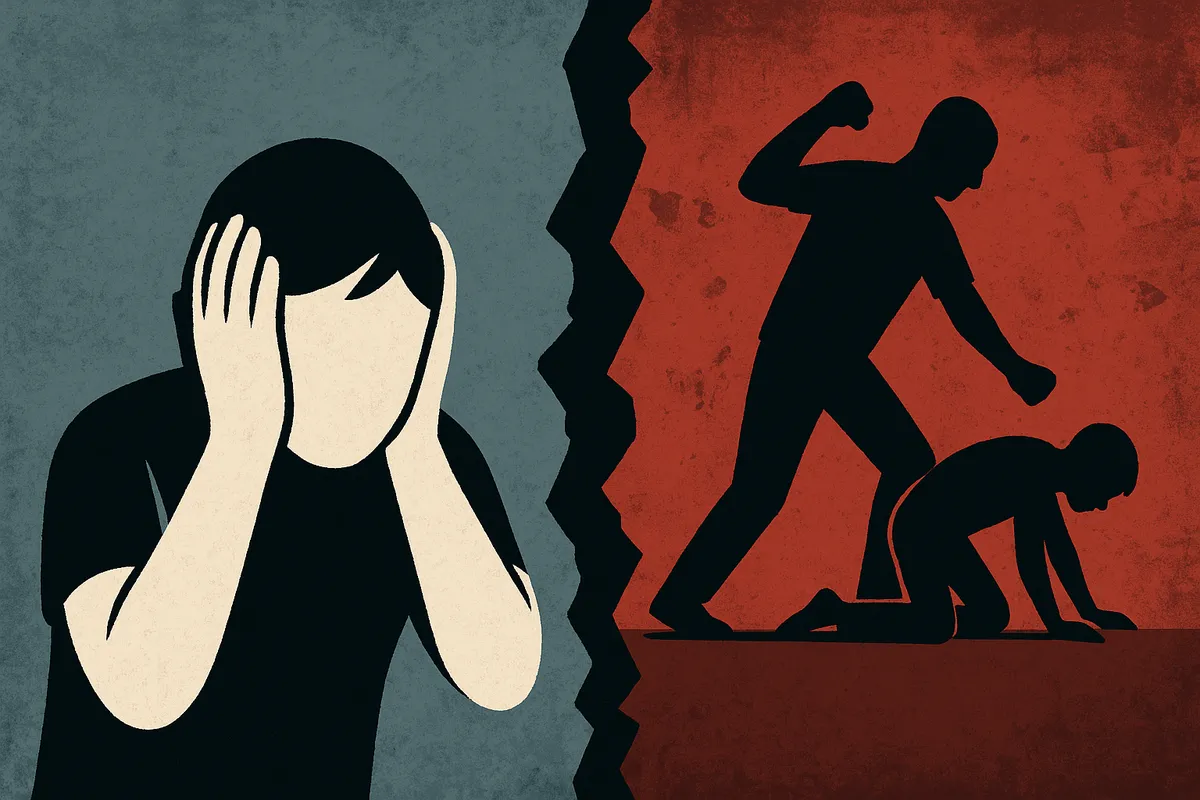Study asks “Why Can’t You Autistics Handle Violence?”
 In Outcomes of Experiencing Interpersonal Violence in Autism: A Mixed Methods Systematic Review and Meta-Analysis (2025), authors Katherine Cooke, Katherine Ridgway, Louise Pecora, Elise Westrupp and Dean Hedley — based at Deakin University (Burwood, Melbourne, Victoria, Australia) and La Trobe University (Bundoora, Melbourne, Victoria, Australia) — compile nearly 60 studies on what happens to autistic people after they experience interpersonal violence.
In Outcomes of Experiencing Interpersonal Violence in Autism: A Mixed Methods Systematic Review and Meta-Analysis (2025), authors Katherine Cooke, Katherine Ridgway, Louise Pecora, Elise Westrupp and Dean Hedley — based at Deakin University (Burwood, Melbourne, Victoria, Australia) and La Trobe University (Bundoora, Melbourne, Victoria, Australia) — compile nearly 60 studies on what happens to autistic people after they experience interpersonal violence.
One finding is absolutely clear: across the literature, autistic people experience interpersonal violence at significantly higher rates than non-autistic controls. This includes physical, sexual and psychological violence in childhood and adulthood. That overexposure is the starting and startling fact — and it should be the central story.
The paper also confirms that in both autistic and non-autistic groups, violence is linked to worse mental health. Among autistic survivors, the effects are often measured as stronger: higher rates of depression, anxiety, PTSD and suicidality. Women and gender-diverse autistic people are particularly likely to report lasting impacts. Qualitative accounts add detail: survivors masking, fawning or shutting down to survive; being disbelieved; losing housing, jobs or relationships after abuse.
And this is where the shell game begins.
Rather than keeping the focus on the excessive exposure to violence autistic people face — the question of why we are targeted so often and by whom — Cooke et al. build much of their analysis around constant comparison to “non-autistic controls.” This raises a concern: could framing worse outcomes this way risk being read as evidence that autistic neurology and psychology are inherently less able to “withstand” abuse? If so, the focus shifts from the systems and perpetrators that deliver the harm into autistic bodies and brains themselves — and that’s a shift worth talking about openly with researchers.
That shift — from “overexposure” to “fragility” — is subtle but powerful. It normalizes a baseline of abuse (“everyone experiences it”) and makes the scientific question about comparative tolerance, not absolute prevention. It risks leading policymakers, clinicians and funders toward “resilience training” and “safety education” for autistic people instead of dismantling the unsafe conditions that make us more likely to be abused in the first place.
The survivor testimony in the review points the other way. It makes the systemic failures visible: unsafe dependence on caregivers, institutional abuse, coercive “care” practices and inaccessible reporting routes. Those are not symptoms of fragility. They are the conditions that allow the violence to keep happening.
If Cooke, Ridgway, Pecora, Westrupp and Hedley had built their analysis from that premise, the prevention agenda might look different: less about teaching autistic people to “cope with excessive violence better than we should ever have to,” and more about confronting the systems that keep hurting us — again, excessively. What kinds of prevention and policy changes could we co-create if we started from that systemic lens? That’s the conversation I’d like to see between researchers, autistic people, and our communities.